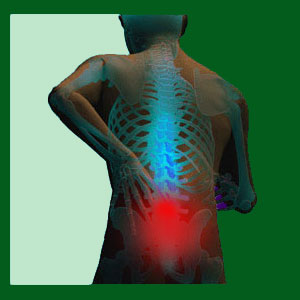
Spondylolisthesis nerve ablation is a form of pain management reserved for persistent symptoms caused by nerve compression. Spondylolisthesis is a condition that misaligns the central vertebral canal, foraminal openings and facet joints, creating the potential for nerves to be compressed and symptomatic expressions to occur. Nerve ablation is one minimally-invasive surgical solution for certain types of neurological symptoms associated with nerve trauma and compression.
Nerve ablation is a surgical undertaking and of course demonstrates certain risks and limitations that all patients should understand before considering treatment. However, nerve ablation also shows promise for treating particular types of pain and can do so without the risks of other care methods.
This dialog provides an objective analysis of nerve ablation as a treatment for spondylolisthesis symptoms. We will explore the pros and cons of nerve ablation care and help educate patients who are interested in this therapy to assist them in making better informed choices about their healthcare options.
What is Spondylolisthesis Nerve Ablation?
Nerve ablation describes the practice of purposefully disabling a neurological tissue’s ability to signal in order to stop pain temporarily or even permanently. In the past, nerves were often severed in order to relieve symptoms of various chronic pain conditions. However, now virtually all cases involved temporary impairment of the tissues as a form of symptomatic treatment.
There are several types of nerve ablation available, using heat, extreme cold, and various light and energy wave therapies. Of course in extreme cases, nerves can be simply traumatized or severed manually to elicit a permanent disabling result.
Nerve ablation seeks to prevent chronic pain signals that might occur when nerve tissues become compressed due to misalignments of the facet joints, central vertebral canal and/or foraminal openings, which are all common consequences of spondylolisthesis.
Benefits of Nerve Ablation
Nerve ablation is usually effective and can help to mitigate pain for an extended timeline ranging from several weeks to many months in most cases. Nerve ablation is useful for patients who can not perform work duties or rehabilitation due to persistent pain associated with listhesis. The procedure is also valuable for patients who have already undergone spinal fusion to correct listhesis, but continue to suffer pain postoperatively.
Nerve ablation surgery can minimize the use of pharmacological treatment for pain management purposes. This is an extremely important benefit, since long-term drug utilization is very risky and detrimental to overall health and wellness in all cases.
Since nerve ablation is a surgical technique, it most often covered by major medical insurances when more conservative, constructive methods of pain management (acupuncture, chiropractic, massage, etc) might not.
Spondylolisthesis Nerve Ablation Risks and Limitations
Nerve ablation is minimally invasive, but is still a surgical technique. Therefore, it demonstrate the risk of any spondylolisthesis surgery, including those associated with anesthetic, infection, incidental nerve damage and worsened postoperative pain. Since this surgery targets the spinal structures, it is even more risky, since complications affecting the spinal cord or nerves can have dire consequences for the patient.
Even when everything goes perfectly, the procedure will only provide limited pan relief in terms of duration. Most patients will have to undergo regular re-treatment of the nerves in the future, which of course requires multiple surgeries and increases the chances of additional complications, such as scar tissue formation. In some instances, subsequent surgery will seek to disable the nerve permanently, if initial treatment was positively received, in order to create a lasting cure for specific types of pain.
Spondylolisthesis > Spondylolisthesis Surgery > Spondylolisthesis Nerve Ablation



